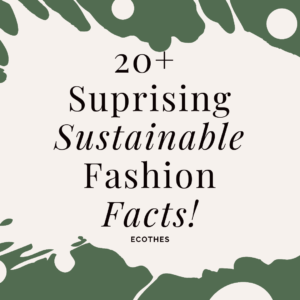This quick material summary will discuss the differences between linen vs. cotton.
We’ll cover how each fabric is made, the pros and cons of linen and cotton, and discuss which fiber is more sustainable.
What is Linen?
Linen is a robust natural textile made from the long cellulose fibers of the flax plant. Linen has been used throughout history dating back over 30,000 years.

The flax plant Linum usitatissimum is grown in temperature cooler regions and is cultivated mainly in China, Canada, and Europe. Flax is grown for its linen production and food production, as its seeds are rich in omega-3 fatty acids and are used to produce linseed oil.
The flax plant is naturally pest-resistant and requires little irrigation, which means that farmers can rely on rainwater irrigation.
How is Linen made?
Once matured, farmers remove the flax stalks from the soil and leave them to ferment in a process known as retting.
Once the stalks are retted, the wood and straw fibers are separated from the flax fibers, known as Scrutching. Scrutching is done via machinery known as a Scutcher or by hand. Once Scrutching is complete, the long finer flax fibers called line and short coarser fibers called tow remain, while the tough woody fibers are by-products and are not used in linen fabric production. However, they are often used for other uses and are not wasted.
Once the long fibers are obtained, machines spin them into yarn in a process known as spinning.
Once spinning is complete, the yarn is woven into the fabric we know as linen.
Linen has many uses in linen clothing, linen bedding, linen sheets, and other linen textiles.
What is Cotton?
Cotton is a natural fiber harvested from the Cotton plant of the genus Gossypium. Cotton fabric has many uses in the fashion industry thanks to its durability, breathability, and moisture-wicking properties.

Cotton is the largest natural textile produced globally, with around 26 million tonnes of cotton produced for the fashion industry alone every year.
Cotton is often a GMO crop and requires vast quantities of irrigation to grow, using around 44 trillion liters every year. In addition to a large amount of water usage, cotton also requires pesticides and fertilizers to grow. As a result, cotton is not a naturally pest-resistant crop, and cotton cultivation damages and reduces the nutrients in the soil.
How is Cotton fabric made?
Cotton is harvested from the cotton plant in pods, which contain fluffy cotton fibers. The fibers are then separated from the pods and are cleaned to remove any dirt or leaf material.

The cotton fibers are then baled and sent to mills. At the textile mills, cotton lint undergoes cleaning in a carding machine. Once completed, a soft, untwisted rope is produced called Silver.
Cotton mills can do an optional step known as combing once the fibers are carded. Combing involves feeding the fibers through a combing machine with metal teeth, which removes the short fibers and ensures the cotton fibers have a uniform direction. As a result, cotton combing yields stronger and more breathable yarn.
Once carding and combing are complete, the fibers are ready to be spun into cotton yarn.
Benefits of Linen?
Linen is a highly versatile fabric, its uses go back thousands of years, and it is well known for its fiber strength and durability.

Other benefits of linen fabric include:
- Breathability
- Quick-drying
- Ability to absorb moisture
- Strength and durability
- Keeping you cool in warm weather
- Biodegradable natural fiber
- Naturally anti-bacterial
- Naturally hypoallergenic
- Eco-friendly fiber
Drawbacks of Linen?
While linen has many advantages, its disadvantages include:
- Linen clothing tends to wrinkle easily
- Not the warmest fabric, so it is unsuitable for colder climates
- Linen fabric is often more expensive than cotton
Benefits of Cotton?
Cotton has many benefits, and it’s clear to see why it’s the most utilized natural textile in the fashion industry.
Benefits of cotton include:
- Breathable material, keeping you cool in warm temperature
- Hypoallergenic
- Moisture-wicking – wicks moisture from the body
- Biodegradable
Drawbacks of Cotton?
While cotton is a natural fiber, it does have disadvantages:
- Cotton requires large quantities of water and pesticides to grow
- Not as strong a fiber as linen or hemp
- Prone to mildew when damp
Is Linen eco-friendly?
Linen is considered an eco-friendly material. Thanks to the flax plant’s natural pest resistance, the plant can be grown without pesticides. The flax plant also requires much less water than cotton, using around 3% of the water needed for cotton production.
Linen is also a biodegradable fabric, meaning it won’t pollute landfills or oceans for hundreds of years, unlike polyester or other synthetic materials.
Is Cotton eco-friendly?
While cotton is a biodegradable natural fiber, it has many environmental disadvantages:
Cotton requires large amounts of water for irrigation – this uses resources which is often scarce in countries it’s grown.
Cotton requires chemical pesticides to grow, polluting waterways and soil and being harmful to humans and animals.
Cotton production often exploits mill workers and cotton farmers
While cotton has many environmental drawbacks, Organic cotton or cotton produced using more sustainable methods is a better alternative to conventional cotton. To read more information about the environmental benefits of organic cotton, read our full article here.
Conclusion: Linen vs. Cotton
Both linen and cotton have positives and negatives; however, from a sustainability standpoint, linen is a more sustainable material than cotton due to lower water and pesticide use.
Both natural fibers are more sustainable options than virgin polyester and nylon, as natural fibers are biodegradable and don’t rely on non-renewable crude oil to create.
If you’re looking to find pure linen clothing options, check out our guide on the best linen clothing brands. Also, discover other eco-friendly natural fabrics, including hemp, organic cotton, and jute.



